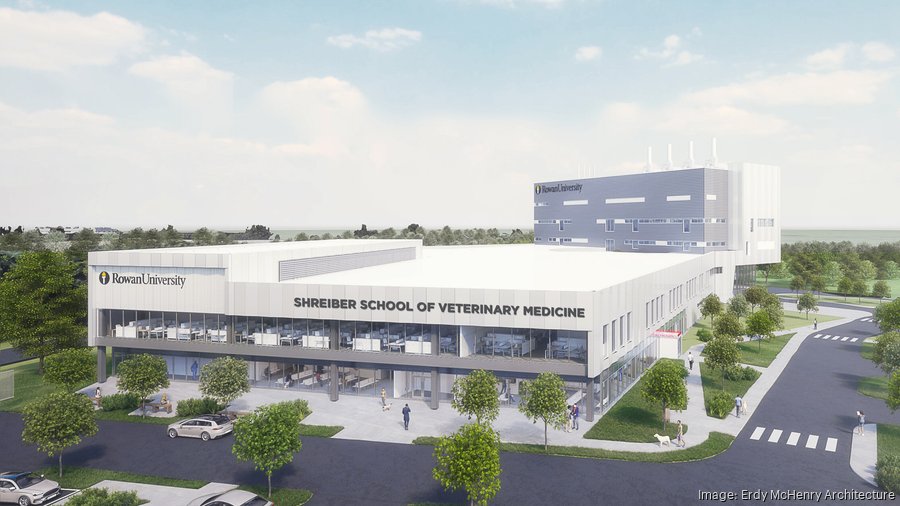Rowan University president expects to spend up to $1.5 billion for 'campus of the future'
Rowan University president expects to spend up to $1.5 billion for 'campus of the future'

Philadelphia Business Journal | January 29, 2024
Rowan University President Ali Houshmand is plotting a 10-year master plan with a price tag that could reach $1.5 billion to help the South Jersey school adapt to the changing higher education landscape.
Now in its 100th year, Rowan has been active with capital projects, new programs and partnerships under Houshmand, who has led the university since 2012. His ambitions for the next decade are just as ambitious, but he wants to be "very careful" about what and how the school grows — making sure that any new construction can withstand the technology-fueled changes Houshmand sees coming to higher ed.
Last week, the school began gathering input from the Rowan community to help chart the next 10 years.
"We need to really imagine all sorts of ways that the campus of the future could look like," Houshmand said. "In fact, it's one of our biggest challenges right now as part of this master planning. When we talk to these [partner] companies, and when I charge them, I say, 'How is your grandchild going to get educated?' I want that campus. I want to start thinking about that and planning that."
Houshmand estimates some $700 to $800 million in infrastructure will be built on Rowan's two Glassboro campuses over the next five years. In the next decade, he estimates Rowan's construction pipeline could total "at least $1 billion if not $1.5 billion" and more than double the school's current footprint.
Partnerships will be key to any new Rowan development, Houshmand said. The school struck an affiliation with Virtua Health two years ago to create a new academic health system, has a longstanding partnership with Lockheed Martin, and in the fall announced a partnership with Dreamscape Learn to create new virtual reality spaces on campus.
"Everything that we do, I want it to be [through a] partnership," Houshmand said. "I keep saying that I love other people's money because it puts less obligation on [Rowan] and makes a profit for them. I want them to come invest and benefit."
So what does Houshmand's "campus of the future" look like?
In addition to the $145 million Shreiber School of Veterinary Medicine and animal hospital currently under construction, projects that may materialize over the next five years, according to Houshmand, include a new dedicated research facility, a new home for the College of Humanities and Social Sciences, a new computer center, a manufacturing hub, and potentially a new sports arena. The school is also planning a two-story home for the Rowan-Virtua Rita & Larry Salva School of Nursing and Health Professions that is expected to be built in the next two years.
All of those projects would likely take place on Rowan's West Campus in Glassboro, where the school has the most room to grow. The new construction would effectively more than double Rowan's operational campus footprint. The school's main campus in Glassboro is about 200 acres, and it has some 330 acres on the north side of the West Campus to build on, according to Houshmand.
Houshmand also reiterated plans for a "holistic wellness village" to be built on a 210-acre plot of land at Rowan's West Campus near Inspira Health's Mullica Hill campus. The plan is moving forward, Houshmand said, and the school will soon sit down with developers and Inspira Health to negotiate terms of the plan. That project would be built out in phases and on its own could take 10 years and cost $1 billion, he said.
Houshmand also noted that opportunities will likely arise for new partnerships over the next 10 years that could add projects to the pipeline.
"We always are willing to consider anything because you cannot in this world in my opinion remain stagnant," Houshmand said. "If you do, people will pass you by and competition will pass you by and then you will never, never catch up."
Houshmand sees artificial intelligence and other new technology upending the traditional higher education model in the coming years. If leveraged correctly, Houshmand said those new technologies essentially put everyone on a "level playing field" regardless of education. To continue to prove their worth, he said, colleges will need to be places where students gather real-world experience, rather than sit in classrooms for hours each week.
"Up until today, we have been building buildings and then decided how much technology we want to put into it," Housmand said. "In the future, we're going to build the technology, and then think how much infrastructure we put around it to sustain it."
In terms of guiding new development, that means Rowan could build more lab space instead of classrooms and offices, or continue to bring corporate partners to campus so students can intern in their space, Houshmand said.
The South Jersey school expects to spend some $3.2 million to build out the virtual reality spaces on campus as only the second school to use the Dreamscape Learn technology.
"Do you think the campus of the future is going to be like today? I would say absolutely not. And if it's not, then what is it going to be? And that to me is right now the greatest challenge that I have in my mind," Houshmand said.